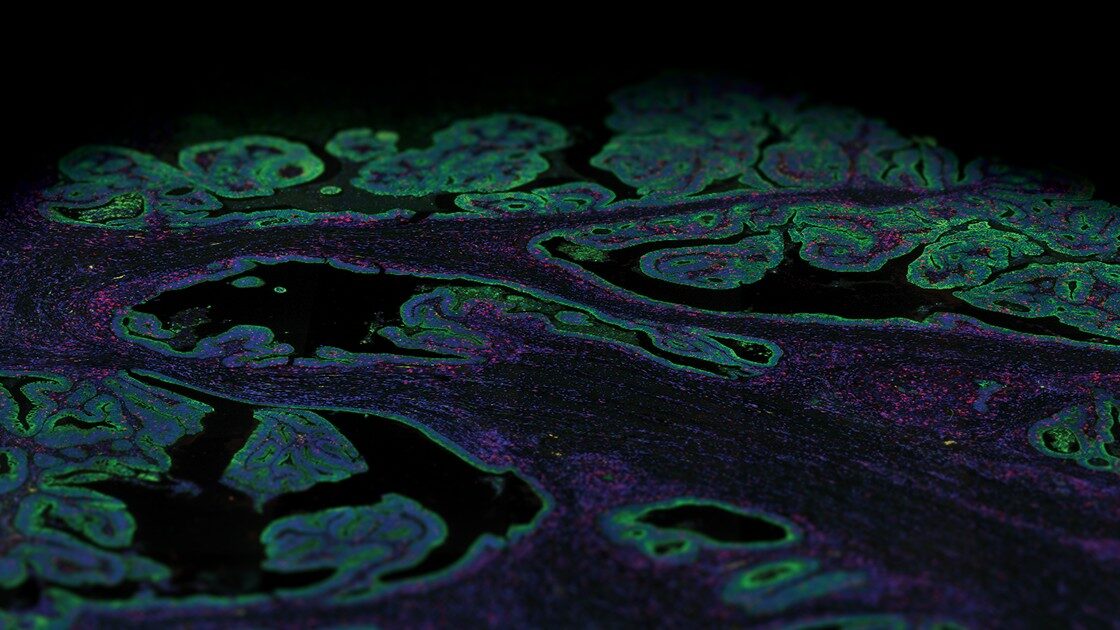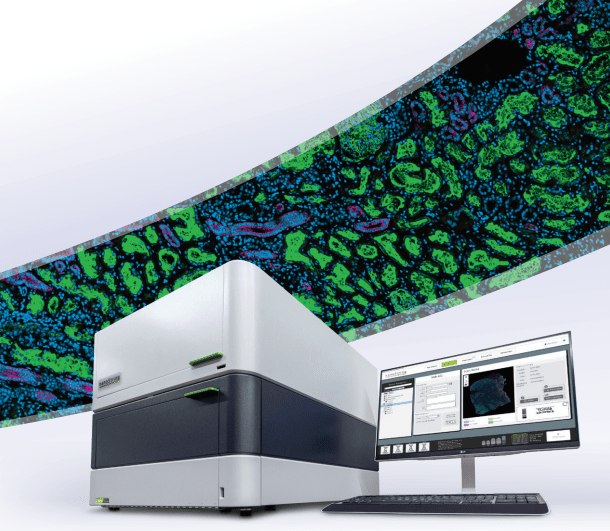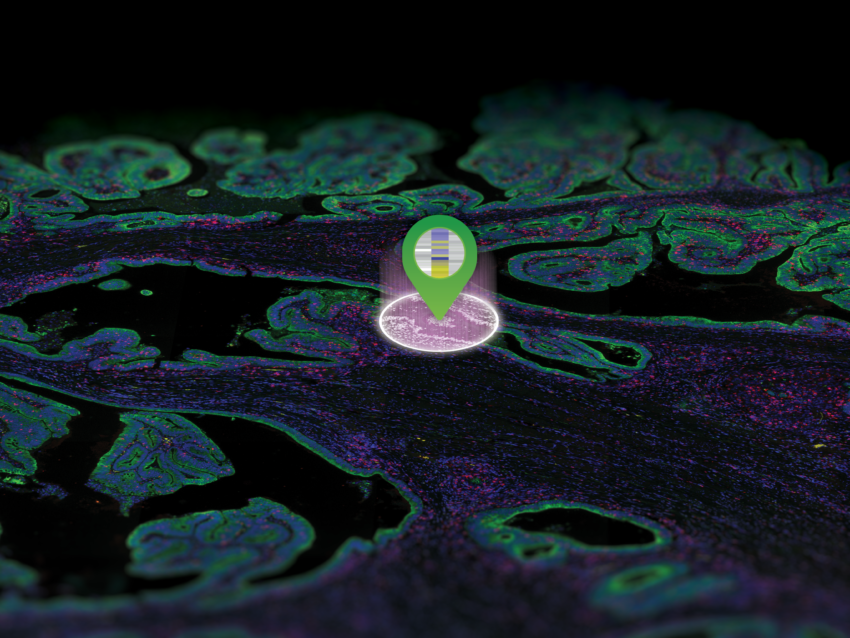
Unravel the complexity of the CNS
Profile up to 96 human or mouse proteins relevant to neuroscience research from distinct tissue compartments and cell type populations with the modular design of the GeoMx Neuroscience Protein Panels. Take advantage of targeted content and expedited readout with the nCounter® Analysis System and discover novel biomarkers of disease and unique drug targets. With no specialized tissue mounting required and a workflow compatible with standard histology staining, you can easily add spatial proteomics to your lab’s capabilities.
The Neural Cell Profiling Core contains 20 targets designed for broad cell profiling and includes necessary controls for all GeoMx DSP experiments. Up to 6 modules plus 10 custom targets can be added to select the content most relevant to your research. All cores and modules contain validated antibodies conjugated to unique oligonucleotide barcodes via a UV photocleavable linker. After region of interest (ROI) selection and UV cleavage of the oligonucleotides, each barcode is recognized by a unique reporter probe that contains a fluorescent barcode. Reporter probes are imaged and counted by the nCounter® Analysis System to provide a direct, digital readout of protein expression that is mapped back to each corresponding ROI.
Curated Content for Neuroscience
Assay Validation
All GeoMx Protein Assays undergo extensive validation to ensure high quality GeoMx DSP data.
Each antibody is tested for specificity before and after oligonucleotide conjugation to ensure performance in the assay (Figure 1). Additionally, spike-in of each module does not affect antibody specificity, demonstrating robust multiplexing capability (Figure 2).

Figure 1: Example NeuN (DPROT_00101.1) and Iba1 (DPROT_00098.1) are tested for specific staining pre- and post- conjugation to a specific indexing oligonucleotide to ensure conjugation does not alter specificity.

Figure 2: Example signal for the Neuro Cell Profiling Core is compared to the Neuro Cell Profiling Core plus individual Modules to ensure no antibody-antibody interference. Single antibody interference testing is also performed prior to core + module testing.

Request a Quote
Contact our helpful experts and we’ll be in touch soon.



